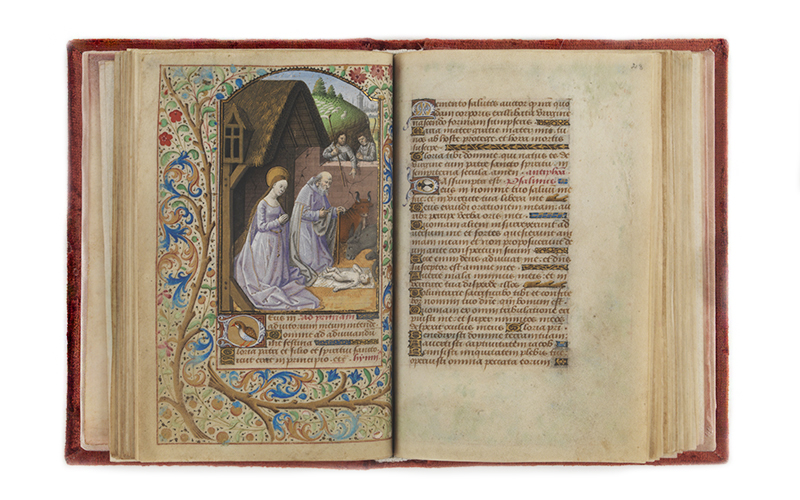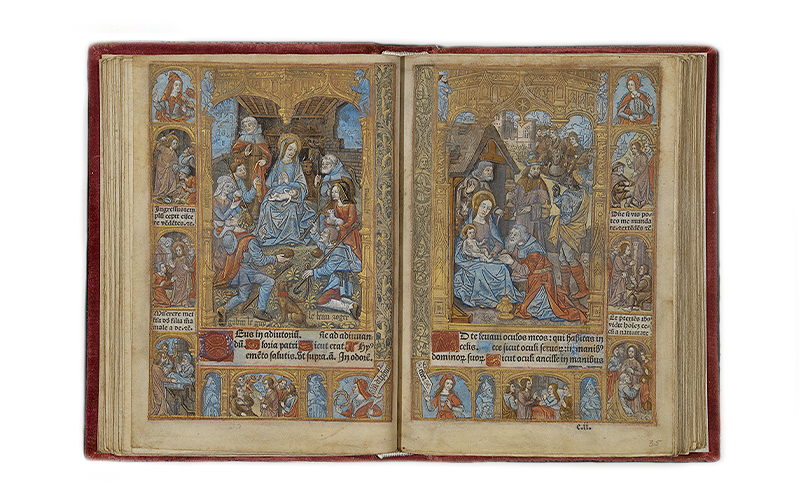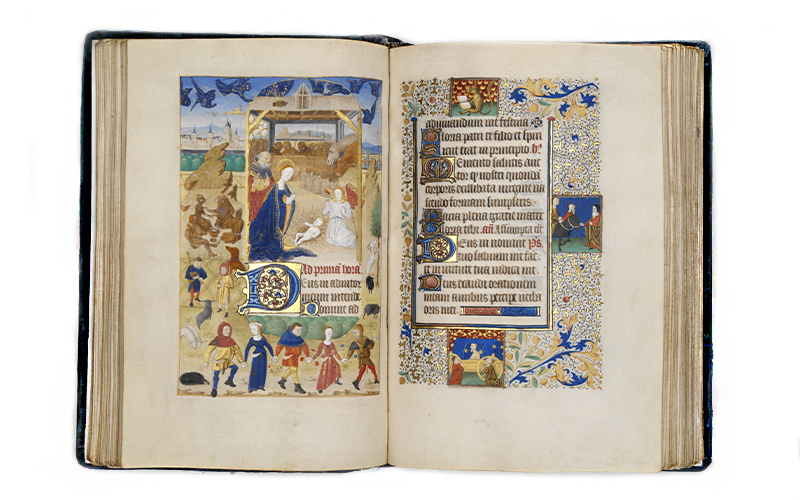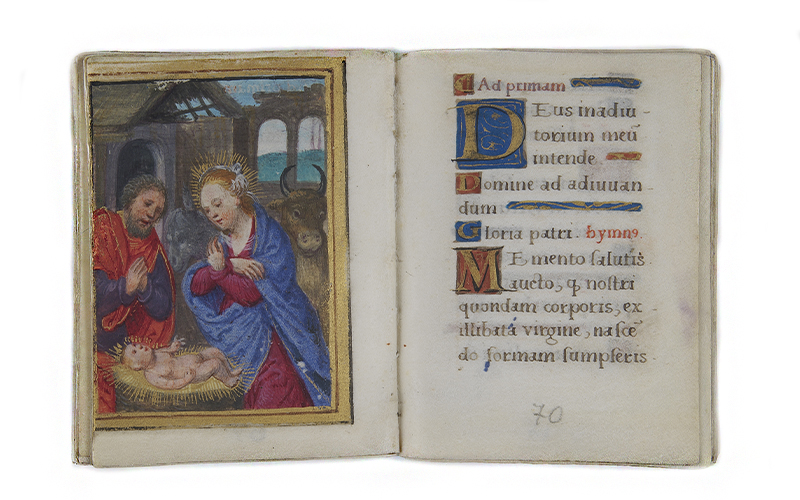Nativity
The art of the miniature – so called because of the small size of the paintings – reached its peak between the Middle Ages and the start of the Renaissance. Produced in very specialised workshops, sometimes created by more than one person, these paintings were used mostly to decorate manuscripts.

To celebrate this festive season, the books of hours exhibited in the Founder’s Collection, created between the 15th and 16th centuries in France, Flanders and Italy, can now be seen open on pages showing the Nativity scene. From the 15th century, representations of the birth of Jesus came to include the figures of the Virgin Mary and Saint Joseph adoring the Child, as demonstrated by the examples on display.

Among the books selected is an incunable – the name given to books created during the very early days of printing, between 1455 and 1500 – in which we can see other scenes related to the birth of Jesus and which form part of the section of the book of hours known as the Hours of the Virgin, such as the Adoration of the Shepherds and the Adoration of the Magi.

More than just illustrating the text, these miniatures offer an interpretation of the key moments in Mary’s life, in accordance with the geographic and cultural contexts in which the books of hours were created.
